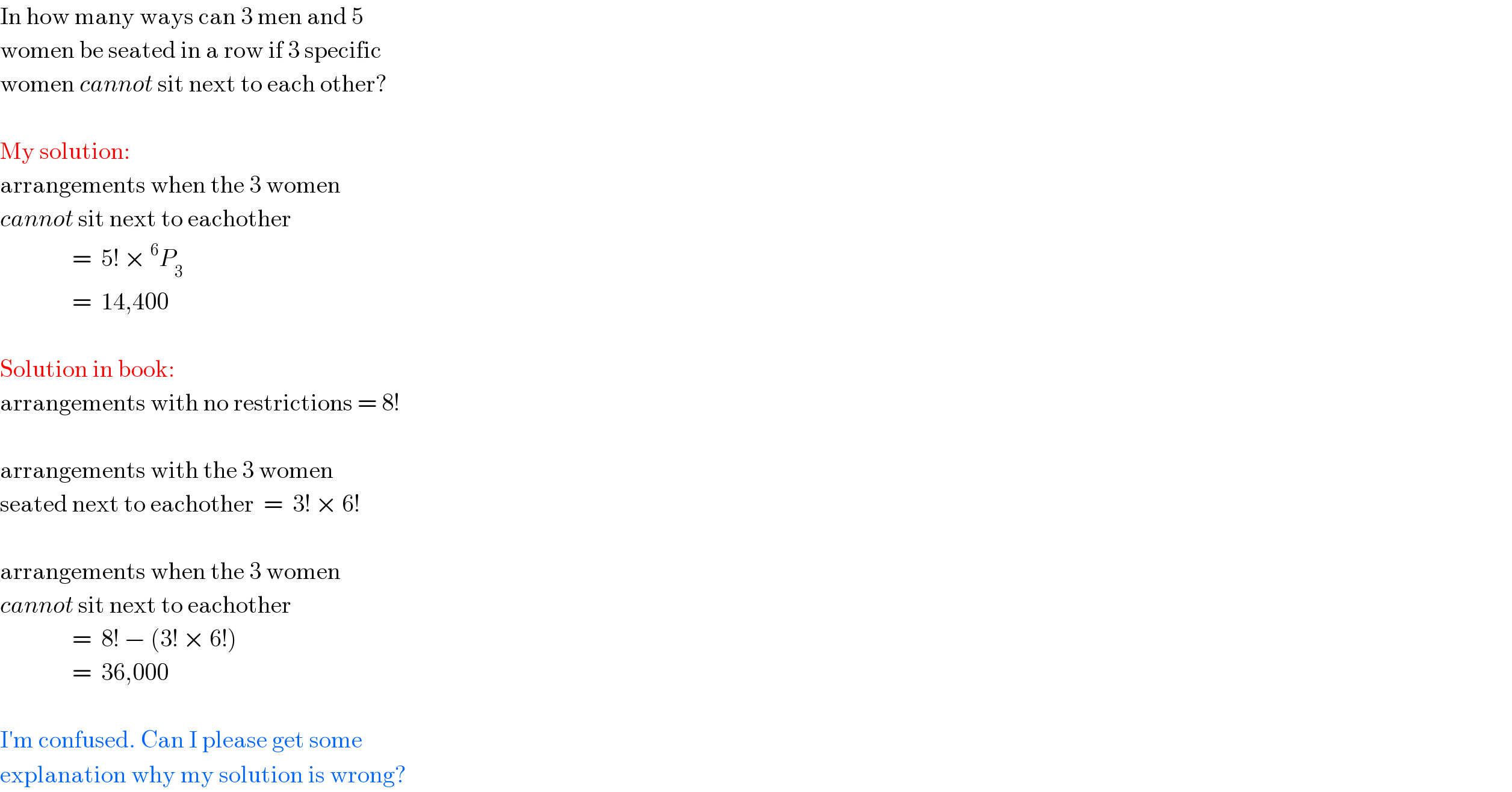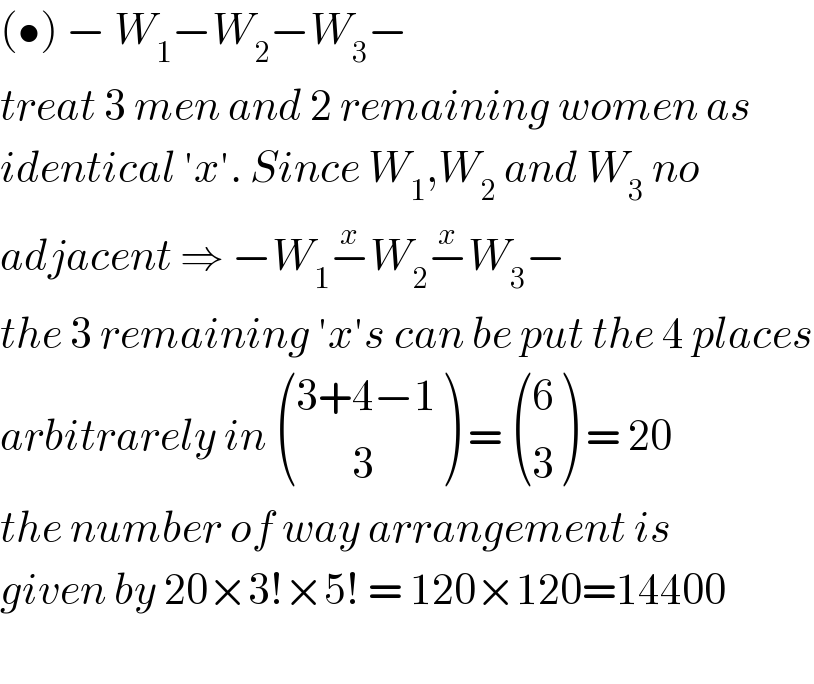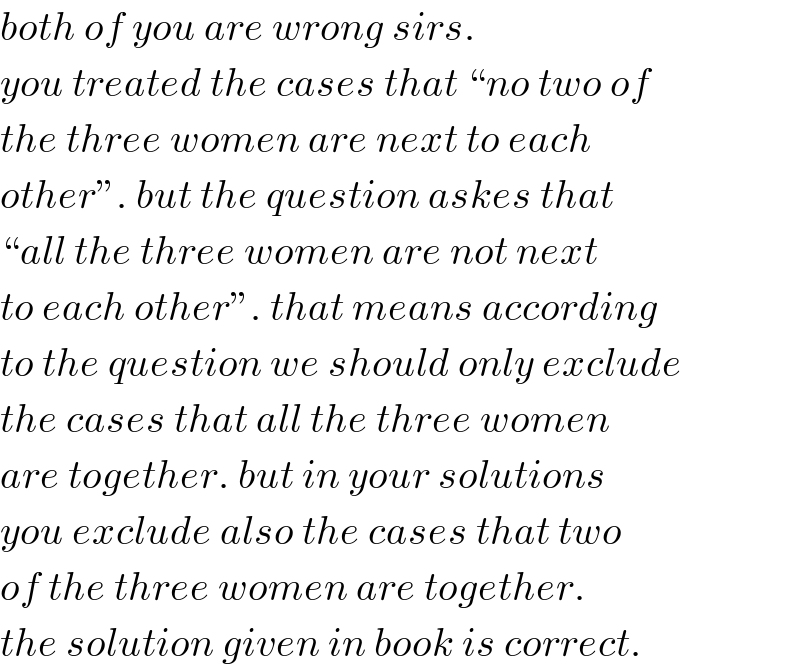
Question and Answers Forum
Previous in Permutation and Combination Next in Permutation and Combination
Question Number 125191 by Don08q last updated on 08/Dec/20

Commented by liberty last updated on 09/Dec/20

Commented by mr W last updated on 09/Dec/20

Commented by mr W last updated on 09/Dec/20

Commented by liberty last updated on 11/Dec/20

